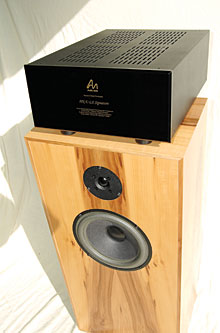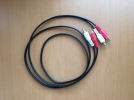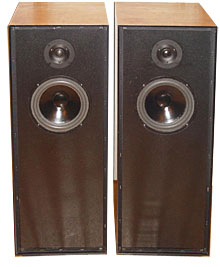... there are a couple of reasons why we are sparse on technical information, in our world the ear is the final arbitor,
1.) As far as measurements are concerned, like I said earlier, the woofer and tweeter were designed specifically for the AN-E, and they therefore had to replicate the exact behaviour of the high efficiency Ferrite and AlNiCo versions of the drivers used in the best versions of the AN-E whose technical specifications are already well publicised (and criricised by some) so I am not quite sure what it is you want us to publicise that is not already available.
2.) As far as releasing exact research papers, all I can say is that it wouldmost certainly be to our competitive disadvantage as it would give far too much away, so when you have spent upwards towards $ 500,000.00 over 6 years on the development and refinement of these field coil drivers, being too detailed about how we got there and why, would mean giving away a lot of proprietary information about materials, processes etc. by going into too much detail and I think it is understandable as to the reasons we do not.
We already hold 4 US patents and what I have learned about this is over the years is that for a company the size of Audio Note it is not worth taking out patents to protect our inventions as we are simply too small to defend them properly and the cost of patents and their defence are exhorbitant.
3.) As far as audio measurement and specifications are concerned, they are OK, sort of, for ascertaining whether a product conforms to some fairly simplistic static and linear parameters, bandwidth, noise, hum, static distortion etc. but as far as being a reliable indicator or even getting anywhere close to determining the quality of sound they are pretty useless, if not broadly misleading as improving many of the measured behaviour involved time reversal (feedback or perhaps 20/20 hindsight?) or other technical trickery all of which have negative sonic consequences.
As a marketing tool specifications are valuable I agree, but fairy tales only take you so far.
I think it is worth pointing out that music is dynamic (complex) and our measurements are static and linear (simplistic) and as Roger Penrose told me last year, "it is impossible to describe a dynamic sequence with a linear formula", so pretending that what we measure is somehow scientific "proof" of sonic performance is deeply misleading, audio is part science and engineering but mostly art, perhaps the thoughts below might explain how I view this, written a while ago,
The first step is to measure whatever can be easily measured.
This is OK as far as it goes.
Second step is to disregard that which can’t be measured or give it an arbitrary quantitative value.
This is artificial or misleading.
The third step is to presume that what can’t be measured easily really isn’t very important.
This is deliberate blindness.
The fourth step is to say that what can’t be easily measured really does not exist.
This is suicide if the objective is understanding the nature of music.
The fifth step is making sweeping assumptions that relate quality of sound to measured "performance" based on the first step by telling a story that ignores step 2 to 4.
That is profoundly dishonest and deceitful, self deceit being a main component.
My favourite quote to describe the most common problem with audio engineers (and might I add many aspects of society as a whole
) is from Upton Sinclair,
"It is very hard to get a man to understand something when his income depends on not understanding it!"
Please pardon the longwinded reply.
sincerely,
Peter

 audiosciencereview.com
audiosciencereview.com







